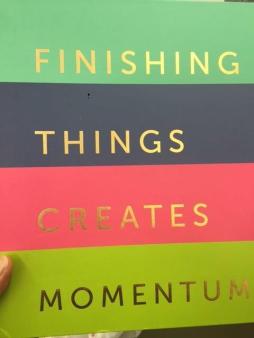Retirement. Everyone wants to get there but very few know how. When individuals receive their benefit package, it often contains information about how to enroll in a retirement plan, but not much else. There are a lot of retirement options - SSI, IRA, 401(k), 403(b), IRRA, Roth IRA - but what good are options if you don’t know how to use them? This blog post is part of an ongoing series about retirement. As a random fact, the names 401(k) and 403(b) come from the section of the Internal Revenue Code that allows them.
Ideally, retirement assets should be compromised of savings and investments, social security benefits and if available, pension benefits (defined benefit plans). Unfortunately, the overwhelming majority of companies no longer provide pension benefits for employees. As a result, if an individual does not have a substantial amount of savings available for retirement, then they are forced to rely on social security as their sole source of income. Often, social security benefits cannot cover day-to-day living expenses forcing many individuals to work longer or never fully retire.
But for those of us who have 20 to 30 years left until retirement, we have so many options available to us to save and secure our future. Let’s use them wisely. There are two basic retirement options available - employer sponsored plans and individual retirement accounts.
Employer Sponsored Retirement Accounts (Defined contribution plans)
The type of business your employer has, in addition to the type of work it does, generally dictates the type of employer sponsored plan available. For instance, 401(k) plans are traditionally used by for profit, larger companies; 403(b) plans are used by non-profit organizations such as schools, hospitals, and churches; 457 and Thrift Savings plans are used by government agencies. Although most employer sponsored plans share similar qualities, there are some differences.
How much can I contribute?
For 2014, the contribution limit is $17,500.00 for employees under the age of 50. Employees over the age of 50 are given the ability to accelerate their savings with a “catch up” provision and can contribute an additional $5,500.00. Traditionally, only before tax money was contributed to employer sponsored accounts. Now, some employers offer a “Roth” option in their plans, which allow contributions after tax money. However, Roth and Traditional contributions cannot exceed the allowable amount for the year. For example, if you are under 50, you can contribute $10,000.00 before taxes and $7,500.00 after taxes during the year. For information from the IRS, click here.
Employer Match?
In plans where the employer offers a match, those matching funds may not be yours immediately. Matching funds are usually set up on a graduated vesting schedule. Vesting basically is the time table for when your will be entitled to 100% of the money your employer has contributed on your behalf. The longer you work for the company, the more of the match is yours. Full vesting can take anywhere from five to seven years. However, all of your contributions are immediately vested.
Individual Retirement Accounts (IRAs)
Individual retirement accounts (IRAs). Overall, there are two types of IRAs, a traditional IRA and a Roth IRA. IRAs are individual accounts that can be set up through financial institutions, such as a bank or brokerage firm (e.g. E Trade, Scotttrade, etc). A traditional IRA allows you to contribute money before taxes; the money grows tax deferred, and you pay taxes on the money once you withdraw the funds in retirement. This is true as long as the contribution rules are followed. A Roth IRA allows you to contribute after tax money and have it grow tax free. No taxes are paid when you withdraw the money in retirement.
How much can I contribute?
In 2014, the contribution limit for IRAs for individuals under 50 is $5,500. For those individuals over the age of 50, they are allowed an additional $1,000.00. For information from the IRS, click here.
There are also income limits to consider when dealing with IRAs. For a traditional IRA, if you have an employer sponsored plan at work, the amount of the contribution that the IRS will allow you to deduct will decrease as you make more money. With Roth IRAs there are a few snags. For example, you cannot contribute more money to an IRA than what you earned in a given year. For individuals above a certain income (IRS website), the amount you are able to contribute can be reduced or completely eliminated.
What is the difference in contributions? (Roth v. Traditional)
With Traditional accounts, both IRA and employer sponsored, contributions before taxes, grow tax deferred, and are taxed when you withdraw. The benefit of making before tax contributions is the ability to lower your taxable income now. If you make $80,000, and contribute $15,000, your taxable income is $65,000. The drawback of not paying taxes now is that you will have to pay them later, and you have to hope that your tax bracket is lower than what it is now.
With Roth accounts, both IRA and employer sponsored, contributions are after taxes, grow tax free, and are not taxed when you withdraw. The benefit of making after tax contributions is that you are able to position yourself in the future with a sum of money that is tax free. The drawback of paying taxes now is, well just that, you are paying taxes now.
I suggest AT LEAST using your employer account to get the match, if available. There are many calculators online to determine how much pre-tax contributions will it affect your take home. Use them. The best strategy is diversifying your taxes — contribute some pre-tax money and contribute some after tax money, either to a Roth IRA or a Roth employer sponsored plan.
Rollovers
Three words. JUST DO IT! There are a few things that can happen with old employer accounts.
One, the old account can sit around unmonitored. Unmonitored accounts are not a good idea. Employer plans can change investment options at any time. Sometimes the investments you thought you had can be phased out and your money sits around in a money market mutual fund doing nothing.
Two, you could be “forced out” of the employer’s plan because you don’t have enough money to stay in. Each plan and amount is different. This force out could get you a check in your hand. The money in your hand is now taxable at your ordinary income tax rate; and if you are under the age of 55, you could be charged with an additional 10% penalty. It’s not worth it.
Three, this is the best option. You can ROLL the money over to your new employer account, if able, OR (my personal favorite) ROLL the money into an IRA. Why do I love rolling money into IRAs? It’s yours!
Investment Options
In a few weeks, I will discuss investing in more detail.


